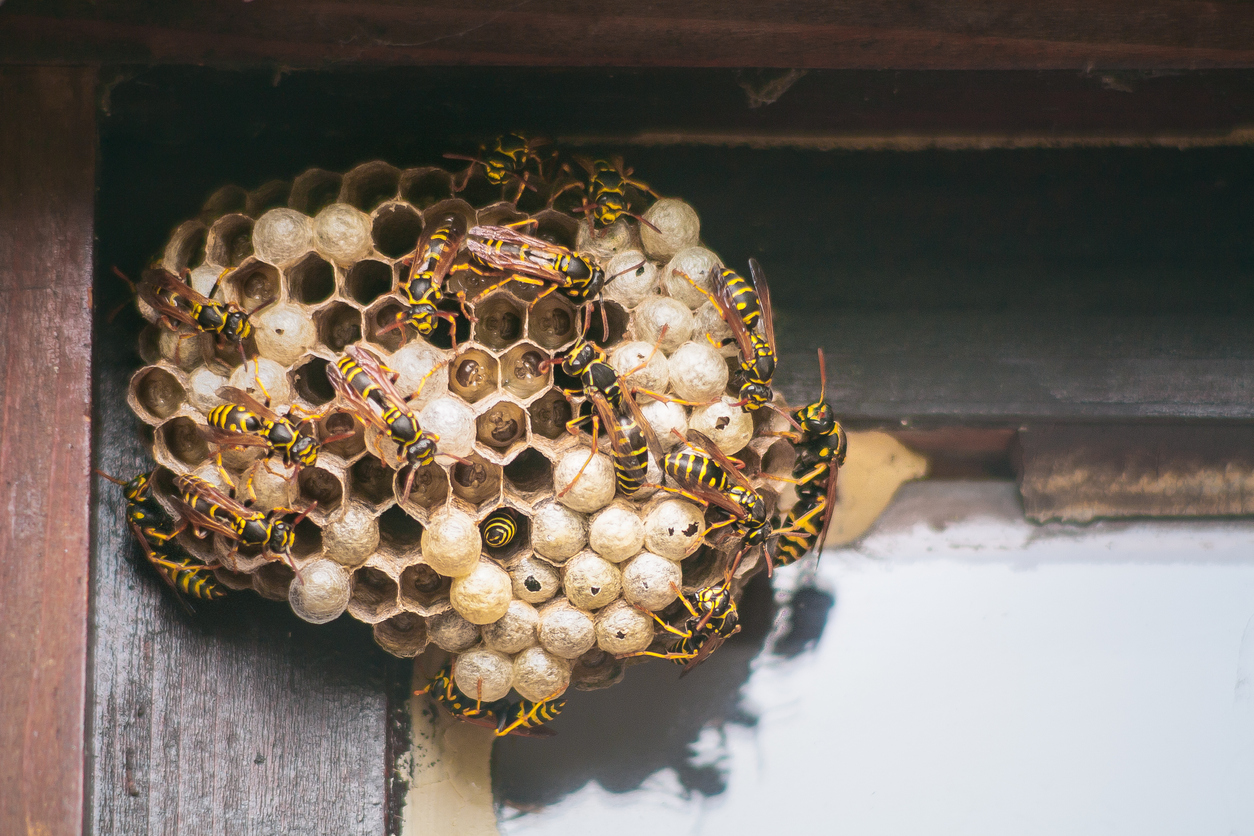
How to Prevent Wasps From Building Nests (Before Summer Starts)
Do you know what can ruin a really nice spring day?
Spending it in the company of a wasp.
Between the paranoia of thinking you’re going to be stung AND the real possibility of you actually being stung, being in the presence of a wasp is genuinely uncomfortable.
What’s even worse is finding a wasp nest in the surrounding area of your home. Because now your chances of being stung are very high. Now is the time to act fast — before summer starts!
Regular Property Inspection
Wasp nests can be built throughout the spring and summer, so it’s important to inspect the exterior of your home and the surrounding properly regularly this time of year. Doing a quick visual inspection once per week should suffice.
Common places you’ll find wasp nests (or the makings of one) include:
- Roof eaves
- Awnings
- Hand railings
- Overhangs
- Playground equipment
- Sheds
- Crevices and corners of any exterior structure
- Nearby trees and shrubs
What NOT to Do
- Don’t attempt to knock down an already established nest; wasps will attack before you have a chance to run away.
- Don’t try the “shop-vac trick” by sucking them up; you’ll realize how bad of an idea that is after a few seconds of trying…
- Don’t use flammable liquids; leftover residue can potentially catch fire during dry and hot periods of time.
What You SHOULD Do
If you find the beginnings of a wasp nest this spring, you can easily knock it to the ground and crush it up so it is completely destroyed. The queen and others at the beginning of this colony are most likely out foraging.
However, if there’s a full nest on your property, it’s best if you call in the professionals to remove it for you. Even those who aren’t allergic can suffer severe injuries if stung enough times — so don’t take matters into your own hands.
It’s best to play it safe. And there’s no better way to remove a wasp nest than to hit it with a big, red boxing glove!
(We’re obviously kidding, please don’t do that!)


